Hello, I’m Gill and I write a photography blog inspired by the landscapes of Suffolk and beyond. Please subscribe to read more of my writing and visit my website to view my images.
The wind is howling and there is rain in the air as I climb into my car to drive the shot distance to the beach. I could have walked but I don’t want to get caught out in the heavy rain that is forecast so I decide driving is the preferred option for this stormy morning.
The met office are forecasting southerly winds with gusts of 45 mph to coincide with a mid morning high tide and I am curious to see the sea in all its fury.
Living on the east coast the waters around my local beach are never really rough. We don’t get the huge waves that roll in from the Atlantic but in stormy weather it is still fun to be out in nature.
I can hear the sea hammering on the shingle as I get out of the car. The noise of the wind is too loud for me to hear the bell at the mouth of the river which is undoubtedly tolling as it gets tossed around in the swell. I shoulder my camera bag and trudge up the shingle bank battling against the force of the wind which is blowing straight into my face.
Ahead the sky is pale grey with just a hint of pink where the rising sun is spilling its light through a crack in the clouds. To my right the storm gathers, dark and moody, promising heavy rain. The coast is flat here and I can see the weather moving towards me from far away.
Hurrying to the sea over a vast expanse of shingle sculpted into wide dune like ridges I pass a starfish in the middle of the beach. I wonder how it got here so far from the water, but then I see the flock of gulls on the tide line and realise they are probably responsible.
Reaching the sea the sound of the ocean becomes intense. It is not the crashing waves but the sound of the moving shingle which is most noticeable. With every wave comes a deluge of small stones washed up and jettisoned into the air by the force of the sea. Confronted by the power of the nature it is easy to see how this beach can change so much in just one season.
I have my 70-200mm lens on my camera which allows me to stay a respectful distance from the sea and I spend some time trying to capture the motion of the waves. I begin by shooting with a fast shutter speed but I can’t really connect with the results so I try slowing things down a little to emphasise the motion and I feel much happier with the results.
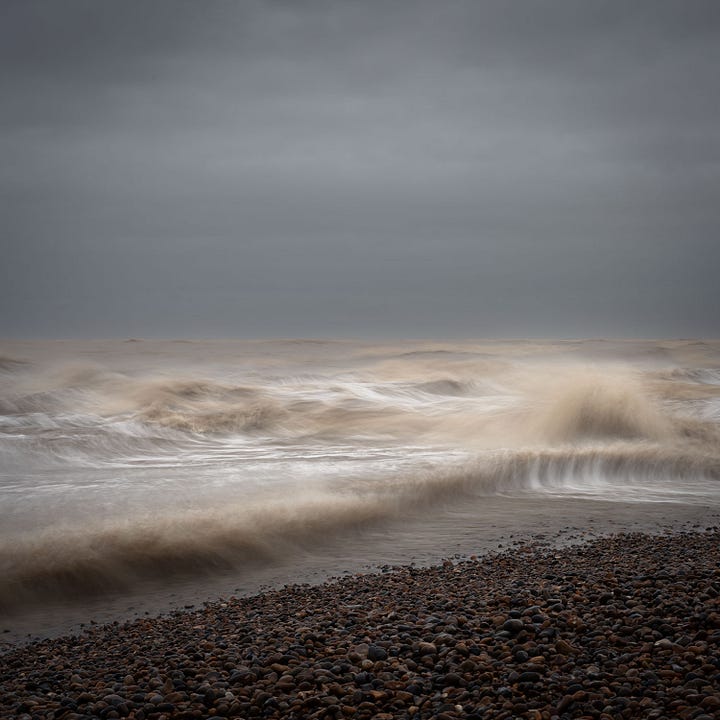
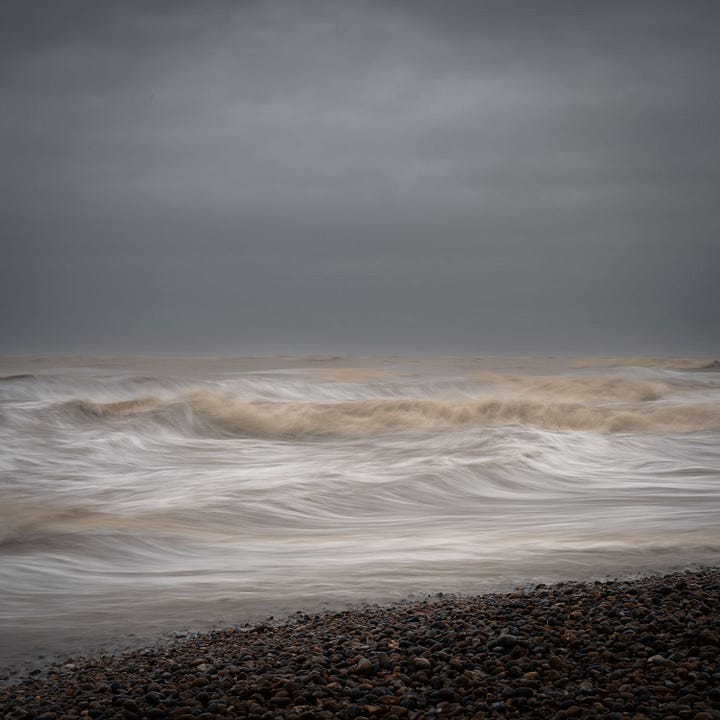
Sitting on the wet shingle chasing the waves across the bay with my lens I suddenly catch sight of a flock of cormorants out of the corner of my eye. They are moving along the river and out to sea, a black spearhead of birds flying low over the waves, looking fragile and vulnerable as the water churns and heaves below them.
I am still shooting at 1/20 second, handholding the camera and enjoying the results. This is not my normal style of photography but there is something about the texture and motion in the images that I find appealing.
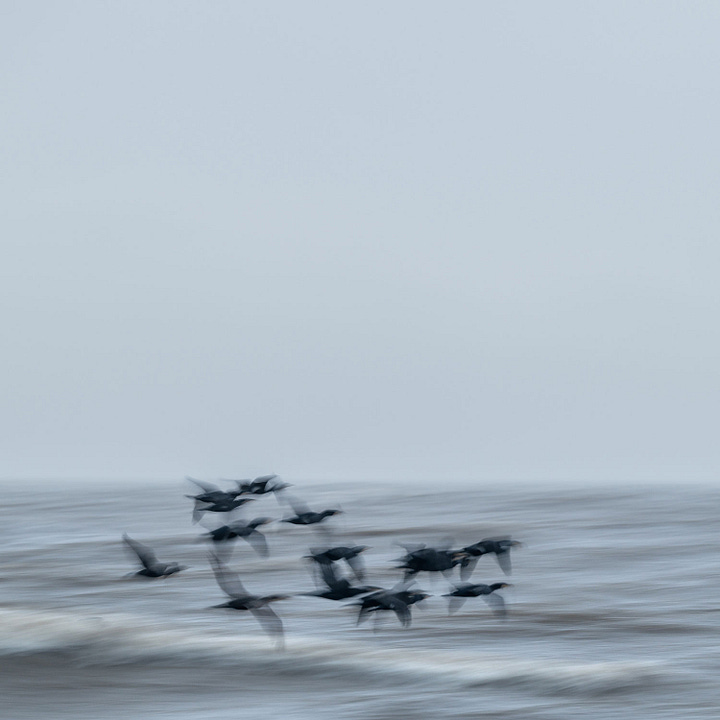
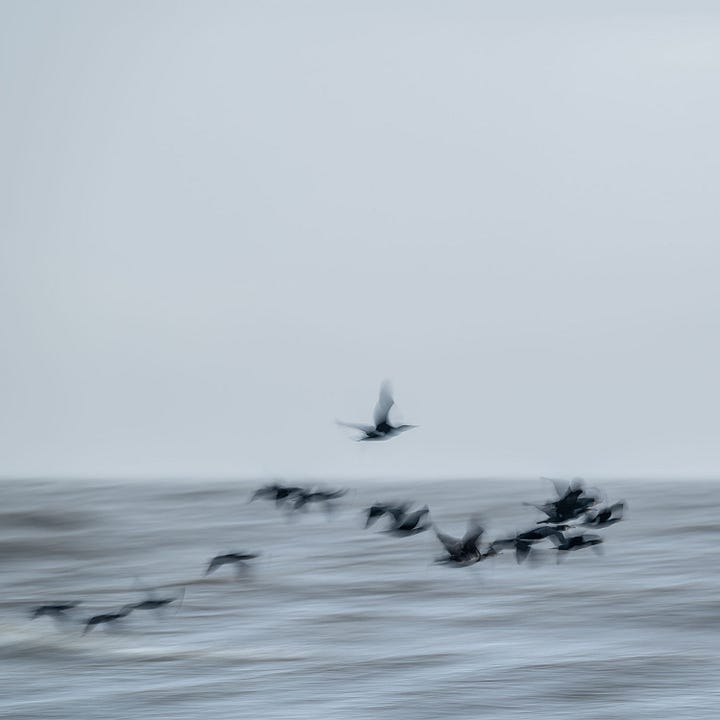
Turning inland to pick up my camera bag I notice hundreds of tiny sea urchins washed up on the tide line. Varying in size from 1 to 3 centimetres these unfortunate little spiky creatures are stranded and vulnerable to the numerous birds that patrol the high water mark. I have never seen such numbers of urchins washed up on this beach and while it is sad to see them it is also fascinating. I get out my macro lens and spend a while making images.
The other creatures sharing the stand line with me are turnstones. I love these birds, they are so comical and aren’t bothered by my presence at all. I spend some time with my 70-200mm lens trying to capture them within their surroundings.
Leaving the beach a couple of hours later I return home feeling windswept, cold but so alive.
Recently I have been working on a new project - Connections. It is a collaboration I have set up between 8 photographers. We are all going to produce a small body of work based on our connection with Suffolk.
I originally thought that I might focus on my love for my local beach and use my images to portray my connection with this wild place. However the more I have thought about this idea the more I realise that I am not stretching myself and am only doing what is familiar to me - making nice images of places that I love.
Now I have some new ideas, but some dilemmas too.
I have re considered my initial idea and have decided that it might be more interesting to focus on my connection with the natural world instead of a specific place. My idea is to portray the landscapes that I love using 8 different emotions that best describe how I feel about the natural world in 2025 (in the face of climate change and biodiversity loss). My idea is to make one image for each emotion using 8 different locations. My initial thoughts for the emotions I would like to portray in this project are:
joy, love, awe, fear, anger, vulnerability, grief and hope.
This idea will definitely be more challenging, but it also presents me with some dilemmas. Is it ok to impose an emotion onto a landscape? I think the positive emotions will be easy to depict because I feel them all the time when I am out in the landscape, but the negative feelings might be more difficult.
I can make sure I go out in weather conditions that will hint at certain negative emotions, but I would probably need to exaggerate these in post processing. Would it be ok to use a foggy woodland to depict fear when I don’t find that landscape threatening at all?
The other dilemma I have is the saleability of the images. The end goal for the project is a book and an exhibition with the proceeds of the book going to charity. I know that if I were to produce 8 ‘pretty’ images from my local beach they would probably sell. However if I make images that represent emotions then 4 of those are going to be negative emotions which people might feel less inclined to buy.
Having pondered all the variables I am thinking that the story is more important than the saleability of the images. If I can get my message across in the way I envisage then I think my body of work will have a valuable message. Surely this is the most important aspect of any project?
As much as I enjoyed my stormy visit to the beach this week, my project depicting this location will have to wait. In the meantime I will continue to enjoy visiting and photographing my local beach and building my connection with this wild and beautiful place.
I wanted to write about my thought process behind the ‘connection’ project as I feel it might be interesting to follow if you are thinking of starting a project of your own.
Is it ok to impose an emotion on a landscape to tell a wider story or is it better to portray the landscape in a more natural way? I would be really interested to hear your views on this subject or anything else that I discussed in the blog, so please leave a comment below.
Thank you very much for reading and until next time, enjoy your photography.
Gill




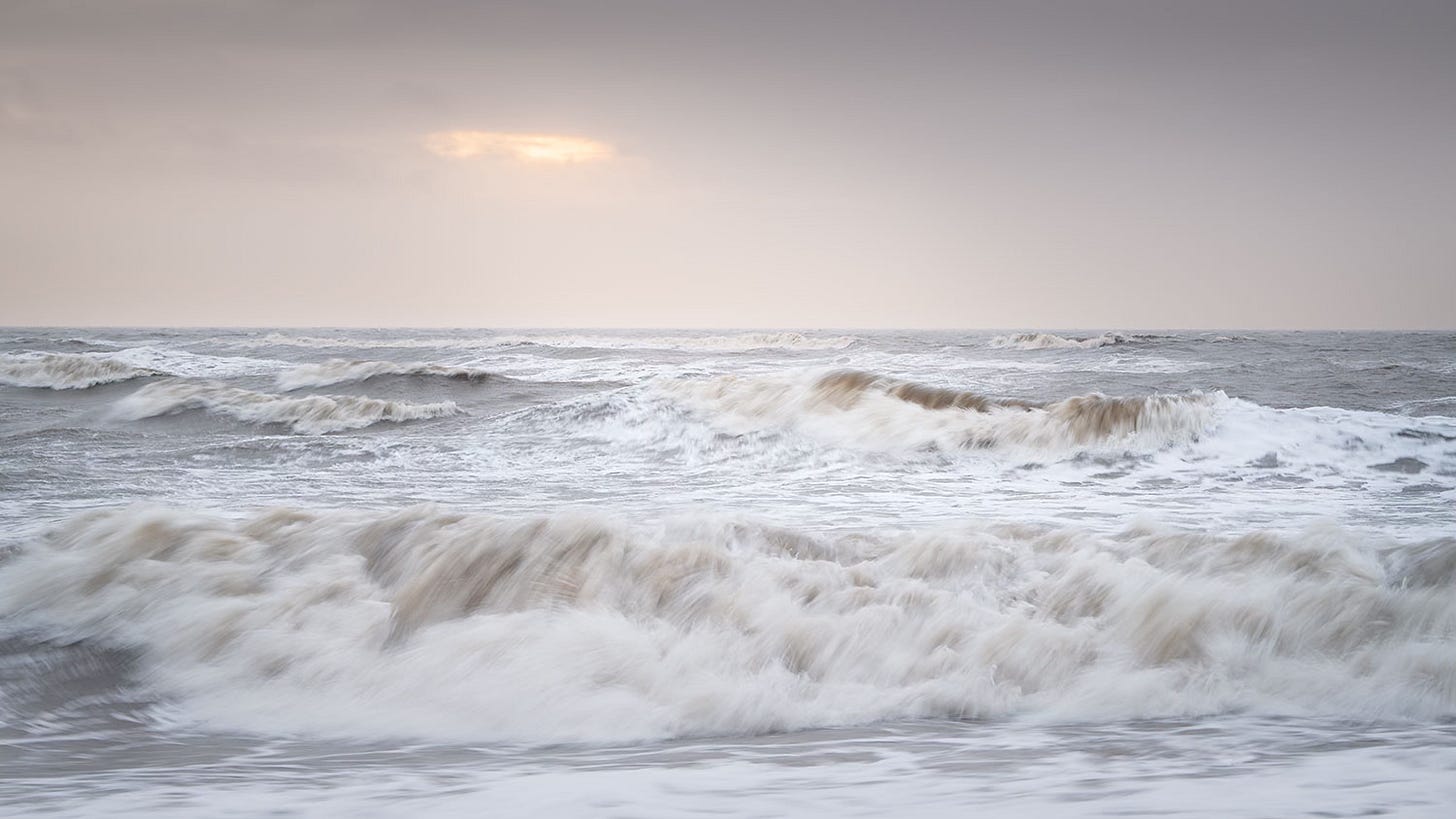
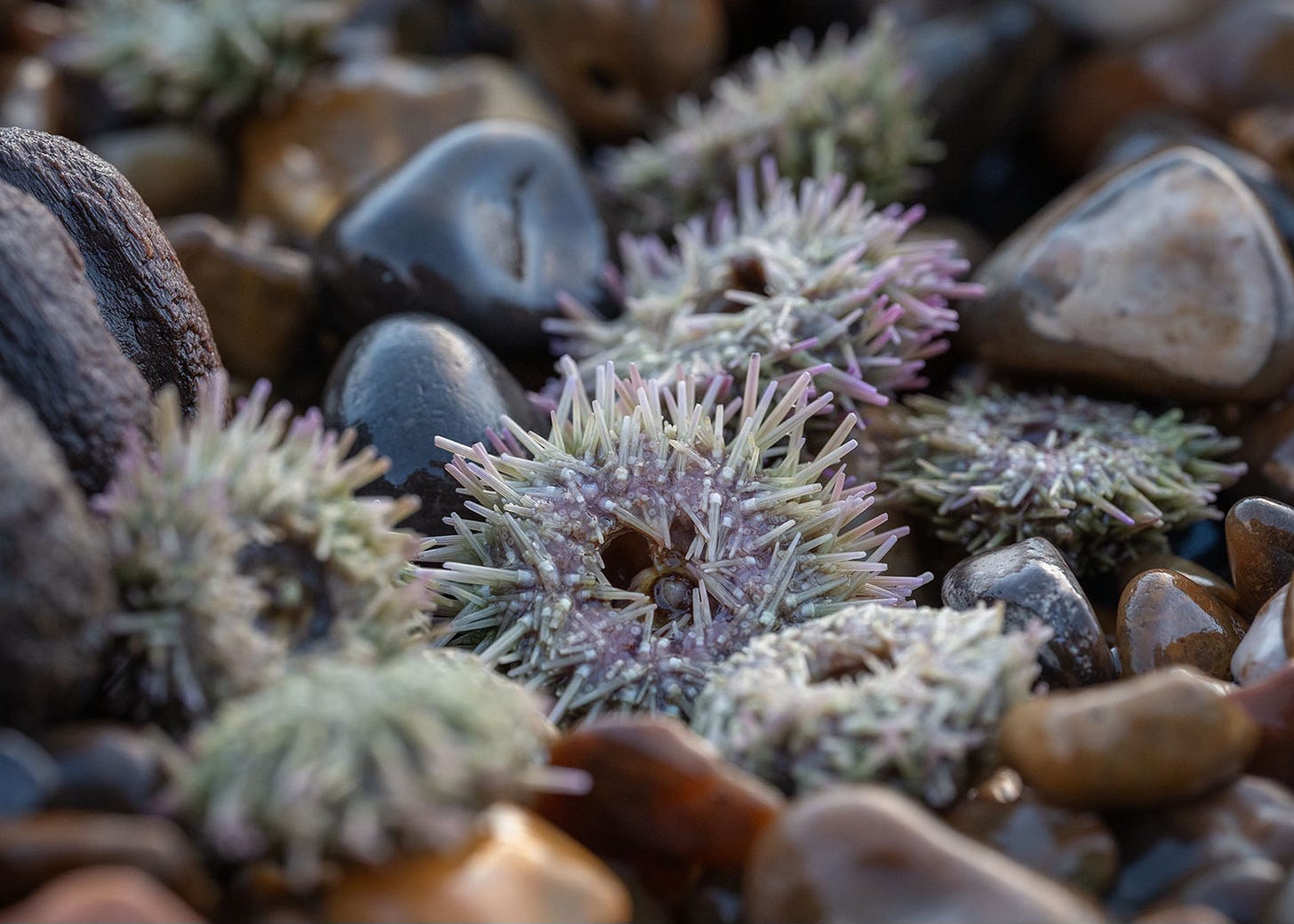
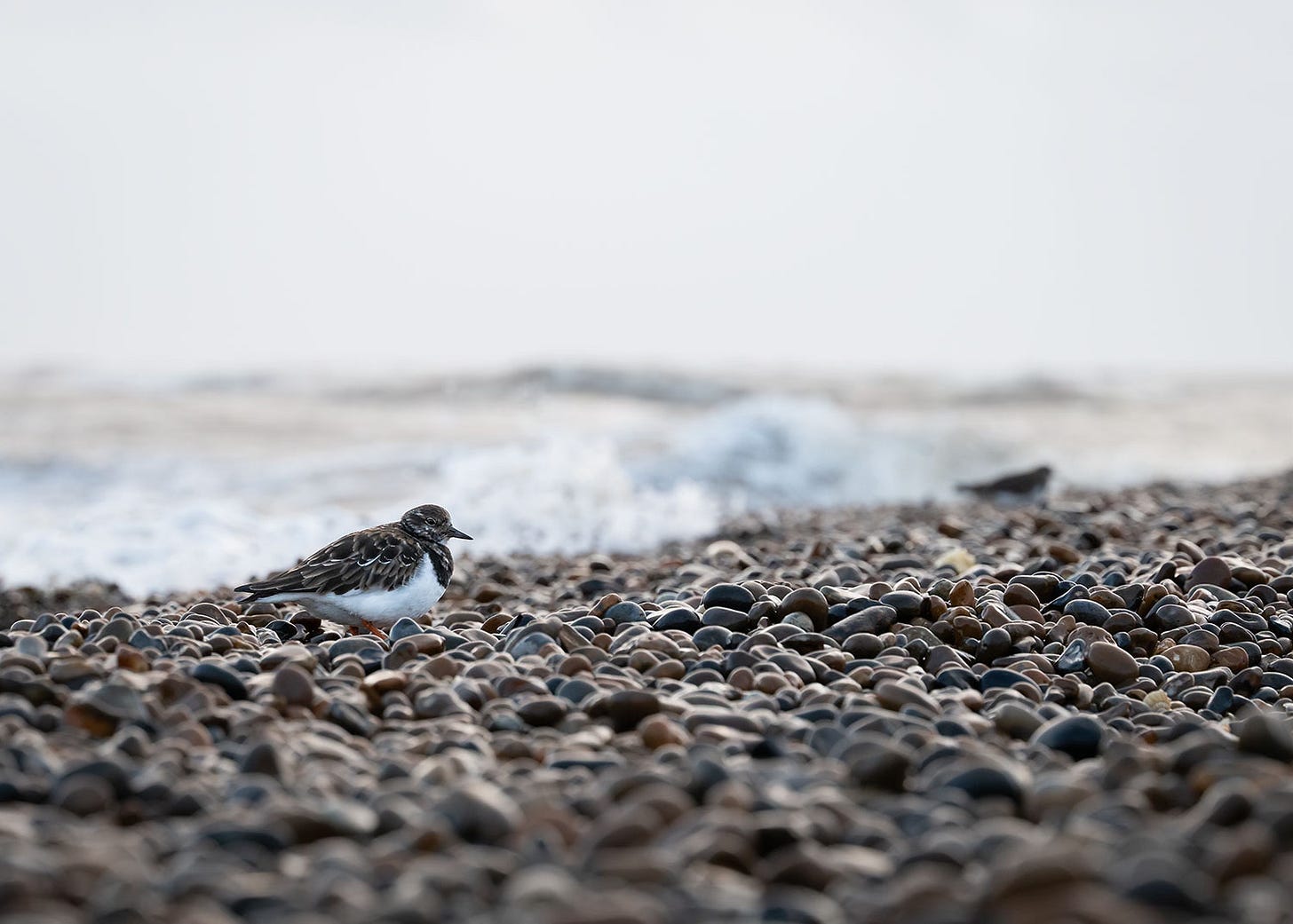
There's something about being out in the stormy weather isn't there. I'm with you on coming back and feeling alive.
This project sounds really interesting. With regards to depicting emotions, the idea of feeling fearful may not come from being in the place itself, but from the idea of say the shifting land or the degradation through climate of the specific place. This could be as simple as written statement alongside the image where we are answering questions such as "what do I fear here?" or "what brings joy at this moment in time?".
I like the idea of stretching your creativity and look forward to seeing where this takes you, and how the project evolves.
Beautifully written and beautiful images Gill. I love and get really excited by stormy weather especially as I live right down on the south west tip of Cornwall. Big waves and a bit of sunshine to light them up is a perfect day for me but I do ending pressing the shutter button too often. You always believe the next wave will be more spectacular.